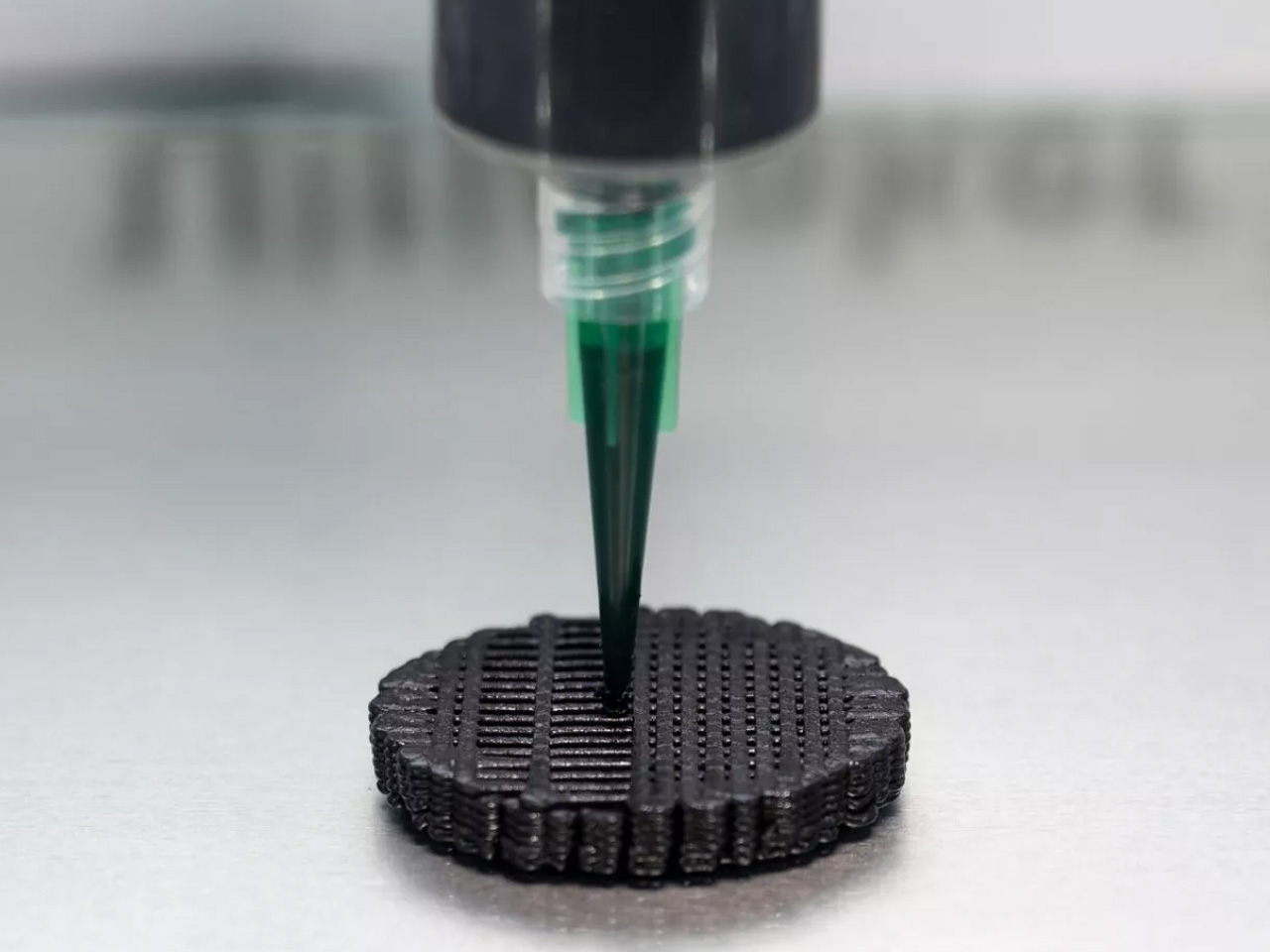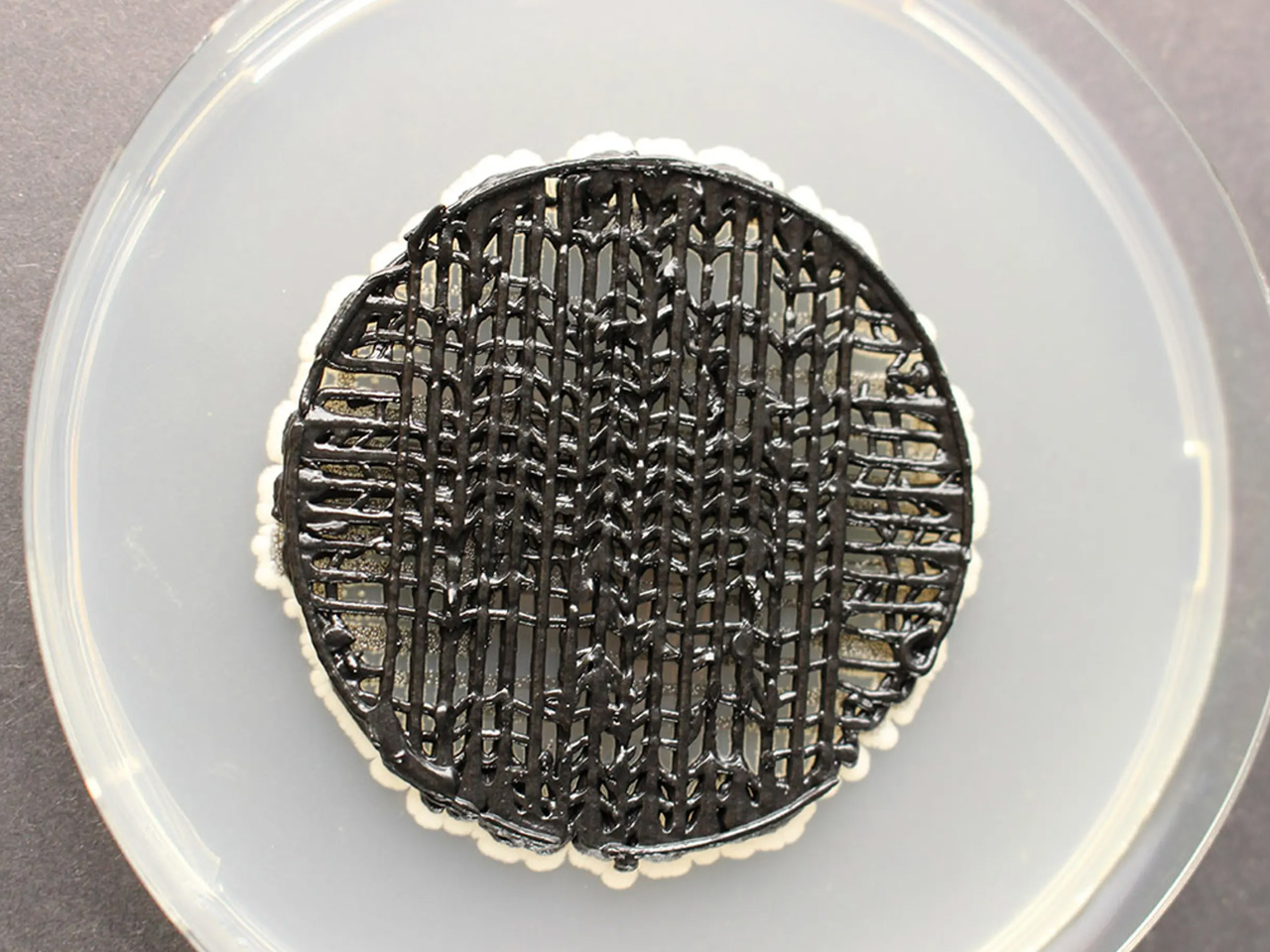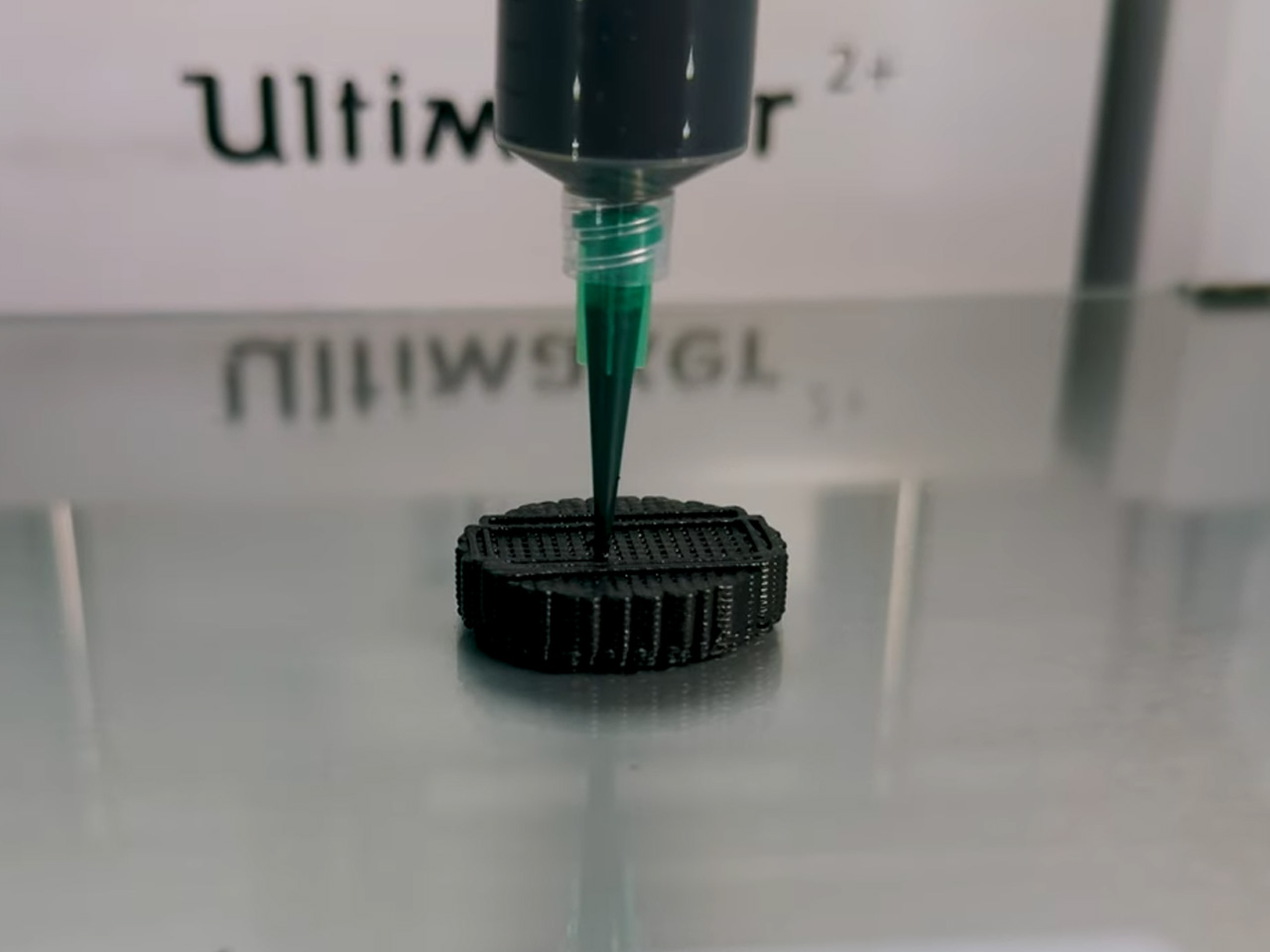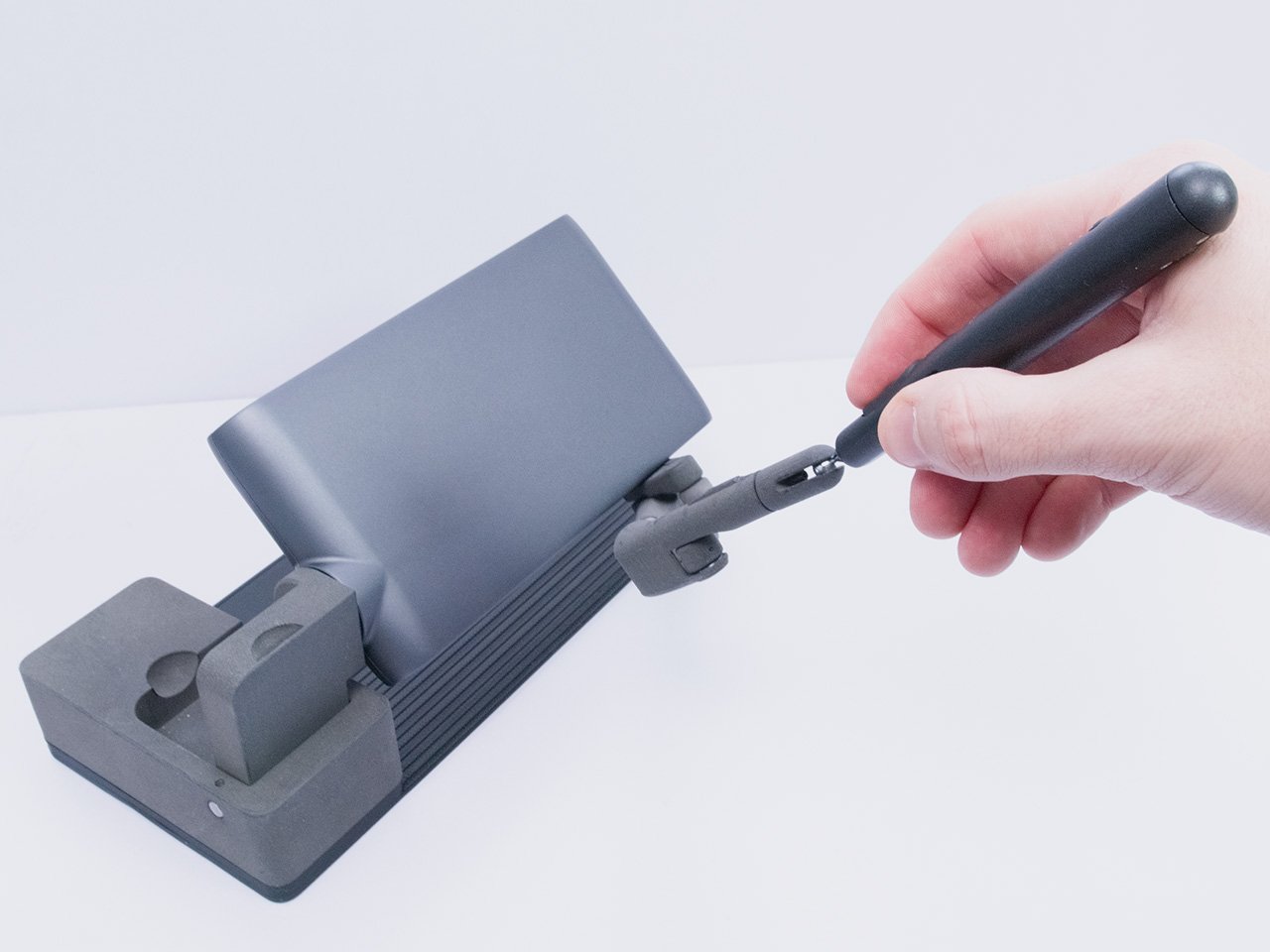Vue lecture
Qualcomm, Intel, and Others Form Ambient IoT Coalition
Meta to Take EU Regulation Concerns Directly to Trump, Says Global Affairs Chief
Game-Changing Haptic 3D Mouse Lets You Feel Digital Objects Like They’re Real… We Tried It
Going to CES is a lot like going on a treasure hunt. You know you’re going to be surrounded by tech, but a lot of the stuff you see is either mediocre or iterative. Only one in maybe a thousand or two thousand products actually achieves something so game-changing, you stop, observe, interact, and then praise. At this year’s CES in Las Vegas, the Haply MinVerse was that product for me. At first glance, it looked like an unassuming input device, but the moment I placed my hand on it, everything changed. This wasn’t a typical mouse. It moved in ways no mouse ever had before—through three dimensions instead of two—and, more importantly, it let me feel what was happening on the screen.
The MinVerse, developed by Haply Robotics, introduces a level of tactile interaction that redefines digital creation. Instead of passively gliding through surfaces, it reacts to the virtual world, pushing back when encountering solid surfaces, offering the sensation of weight, and making digital objects feel real. Sculpting in 3D suddenly felt natural, as if I was actually pushing clay rather than manipulating polygons. Controlling objects felt precise, like my hands were directly influencing on-screen physics. I’ve spent years playing VR games knowing fully well that the virtual wall in front of me isn’t real… but with the MinVerse, I tried touching a 3D surface, and the mouse stopped my hand the moment it hit resistance. That’s truly mind-bending.
Designers: Felix Desourdy & Romain Bursi
Click Here to Buy Now: $670 $1500 ($830 off). Hurry, only 13/15 left! Raised over $80,000.
The MinVerse was developed by the folks at Haply Robotics as an iterative improvement to their Inverse robot. The Inverse (which I saw first) is a 3D input and haptic feedback device designed for industrial and scientific applications. It’s impressive, but it isn’t consumer-grade. Realizing that 3D input should be for consumers and smaller creators too, Haply designed the MinVerse, a smaller, flatter, and more advanced version of its predecessor. About the size of a large power-bank, the MinVerse sits at just 40mm or 1.5 inches in height, with the ability to be used on its own, attached to a computer mouse, or even a stylus – effectively revolutionizing fields like design, engineering, creative coding, game development, and even gaming itself.
The device measures 240mm (9.4 inches) wide, 120mm (4.7 inches) deep, and 40mm (1.5 inches) tall when folded shut. Open it and you notice how unique it looks compared to any mouse you’ve ever seen, but you also immediately get the hang of it in minutes without really any learning curve. The mouse’s parallel linkage arms allow for any movement on a 2D plane, but lift your hand off the floor and you realize that you can now manipulate the same cursor in another axis.
A 4kHz refresh rate means smooth usage whether you’re modeling or gaming. Plus, its force feedback, ranging from 2N to 4N, ensures that users don’t just see virtual objects but physically sense them. If a cursor hits a wall, the MinVerse pushes back, making the digital barrier feel solid… and I can’t stress enough how much of a quantum leap this combination of 3D manipulation and haptic reaction is for a lot of professions.
For 3D artists and designers, it offers a way to sculpt, model, and manipulate objects with realistic force feedback. Instead of relying solely on visual cues, they can feel the depth, texture, and weight of their creations. Game developers using software like Blender and Unity can position assets, adjust camera angles, and refine animations with an intuitive sense of touch, making workflows more natural.
Engineers and robotics enthusiasts benefit from the precise force feedback when controlling robotic arms or piloting drones. Instead of abstract joystick movements, they can physically feel the machine’s response, leading to more accurate and immersive control. Even gamers will find the experience transformative—whether it’s feeling the tension of a bowstring, the weight of a sword, or the kickback of a firearm, the MinVerse brings digital interactions closer to reality.
Imagine designing a product and being able to feel how its parts fit together before manufacturing. Or training in a simulated environment where the controls respond like real-world machinery. This technology has the potential to go beyond creative industries, extending into education, medical training, and even remote-controlled robotics.
I’ll be honest – Haptic feedback isn’t new, but integrating it into a consumer device at this level is a major leap forward. The device recreates the sensation of textures, resistance, and force, allowing users to feel surfaces, materials, and physical interactions as if they were truly there. The MinVerse does for mice what the Oculus Rift did in 2012 for VR headsets – make them popular, affordable, compact, and potentially create a new device category for consumers and professionals.
The MinVerse is available for a discounted price of $670 for early adopters, studios (both design and gaming), robotics startups, engineers, and 3D modelers/animators. It’s not cheap – but devices that are a generational leap aren’t supposed to be budget-focused. It comes in a gorgeous matte-metallic space-grey finish along with a comprehensive kit of modules. The modular attachments—including a stylus, a 2D mouse mode, and a VR controller—allow the MinVerse to switch functions seamlessly. The MinVerse connects via USB-C and features a wireless stylus, with a wireless mouse mode coming soon.
Click Here to Buy Now: $670 $1500 ($830 off). Hurry, only 13/15 left! Raised over $80,000.
The post Game-Changing Haptic 3D Mouse Lets You Feel Digital Objects Like They’re Real… We Tried It first appeared on Yanko Design.
OhSnap MCON: The Compact Controller That Reinvents Mobile Gaming
Mobile gaming has reached a point where smartphones can handle graphically demanding, console-quality games, yet touchscreen controls continue to be a weak link. The lack of precision forces players to deal with frustrating input delays, limiting the experience. While many controllers attempt to fix this, most introduce bulky designs, awkward mounting systems, and storage challenges that diminish the convenience of gaming on the go.
The OhSnap MCON, introduced at CES 2025, changes the equation. Designed to be the most compact and portable mobile controller ever, it magnetically attaches to the back of a phone and stays out of the way until needed.
Designer: Josh King & Dave Echem
Click Here to Buy Now: $119 $149 (20% off). Hurry, only 4/2855 left! Raised over $1.5 million. Less than 72-hours to go.
A Controller That’s Always With You
Most mobile controllers need to be detached and stored when not in use, making them impractical for everyday carry. The MCON solves this by magnetically snapping to the back of a phone, ensuring it’s always within reach. Measuring just 5.67 inches long and under three-quarters of an inch thick, it maintains a low profile without compromising functionality.
“OhSnap MCON eliminates the bulk and hassle of traditional controllers, making it a must-have for every mobile gamer,” said OhSnap CEO Dale Backus. Unlike conventional designs that require clamping mechanisms or wired connections, the MCON stays attached at all times, turning a smartphone into a handheld gaming device without extra baggage.
Rather than relying on cumbersome clamps or expandable frames, the MCON features foldable grips that lock into place for comfort, along with a quick-sliding mechanism for instant access. Press both Quick Launch Buttons, and the controller deploys automatically, shifting the phone into an angled position while extending ergonomic grips that lock into place. This seamless transition allows players to go from checking messages to full gameplay in seconds. When a text or call interrupts gameplay, the controller slides shut, instantly returning the phone to its original form without the hassle of detaching or reconnecting anything.
Precision Controls with Hall Effect Joysticks and Silent Buttons
Despite its compact design, the MCON delivers console-quality precision. Many mobile controllers rely on standard analog sticks that are prone to drift, but the MCON features full-sized Hall Effect joysticks. These use magnetic sensors instead of physical contacts, eliminating drift and ensuring long-lasting durability with consistent responsiveness over time.
The button layout is designed for intuitive control. Unlike traditional mechanical switches that produce loud, clicky sounds, the MCON’s silent tactile buttons allow for smooth, discreet gameplay. Whether gaming in a shared space, on a late-night flight, or during a break at work, these buttons provide instant feedback without drawing attention.
Bumper-style triggers further enhance responsiveness, making them ideal for fast-paced games that require split-second inputs. Every design decision in the MCON is centered around a fluid gaming experience without unnecessary bulk.
Universal Compatibility for Any Smartphone
The MCON works with nearly any modern smartphone, regardless of brand or model. iPhone users benefit from native MagSafe compatibility, allowing the controller to attach magnetically without additional hardware.
For Android users and older iPhones, OhSnap includes a Magnetic Adapter Puck, a thin adhesive-backed disc that replicates the MagSafe attachment system. This ensures seamless integration without the need for clamps, brackets, or extra accessories.
With smartphones varying in size and shape, the MCON’s modular spacer system accounts for different camera bump heights. If a phone has a large camera module, stacking two pucks creates a level attachment. Smaller devices may only need a single puck or none at all, ensuring a stable fit.
Support for foldable phones is also in development, with OhSnap confirming that future updates will introduce mounting solutions for devices like the Samsung Galaxy Z Flip and Motorola Razr.
Bluetooth and Wired Connectivity for Versatile Gaming
To keep things simple, the MCON connects wirelessly via Bluetooth, allowing for unrestricted movement without cable clutter. Unlike controllers that require a direct USB-C or Lightning connection, MCON’s wireless setup works across all major mobile platforms.
Despite being Bluetooth-powered, battery life is not a concern—a 30-minute charge lasts for weeks, making it one of the most efficient controllers available.
Customization, Repairability, and Long-Term Value
Most controllers are built as sealed units, making repairs impossible. OhSnap designed the MCON with longevity in mind, using high-grade materials to ensure durability while allowing users to maintain and modify their controllers as needed. The entire device can be disassembled with a Torx screwdriver, enabling joystick replacements, button swaps, and even aesthetic upgrades.
Customization is just as important as repairability. The MCON supports interchangeable top plates, adjustable grips, and modular joystick options, allowing players to tailor it to their preferences. This design approach extends the controller’s lifespan while reducing electronic waste, aligning with the growing Right to Repair movement.
From Basement Prototype to Kickstarter Success
What started as a basement project by 19-year-old Josh King evolved into a breakthrough in mobile gaming. King developed the first prototype using a 3D printer in his parents’ basement, determined to create a controller that made sense for smartphones.
After partnering with OhSnap CEO Dale Backus, the MCON evolved into a refined, market-ready product. The response was overwhelming—within just eight days, its Kickstarter campaign raised over $1 million, proving that gamers are eager for a controller that blends function and form.
The Evolution of Mobile Gaming
The OhSnap MCON redefines mobile gaming with Hall Effect joysticks, silent tactile buttons, and an innovative sliding design. It delivers console-level precision in a form factor built for portability. Its MagSafe attachment, instant deployment, and repairable design ensure seamless integration into any gaming setup.
Jump into an online match or explore an open world—MCON keeps your smartphone ready to play. OhSnap best sums it up: “Play Now.”
Click Here to Buy Now: $119 $149 (20% off). Hurry, only 4/2855 left! Raised over $1.5 million. Less than 72-hours to go.
The post OhSnap MCON: The Compact Controller That Reinvents Mobile Gaming first appeared on Yanko Design.
Google Halts Its Diversity and Inclusion Hiring Goals
Live Oak Bank Review: Services, Rates, and More
Lili Review: Business Checking Features, Pros, Cons & More
7 Best Banks for Real Estate Investors Evaluated for 2025
Ransomware Payments Decreased by 35% in 2024, Research Finds
Top 10 Banks That Integrate Seamlessly with QuickBooks in 2025
Google, Apple Under Investigation to Determine Compliance with New UK Competition Law
Price Drop: Get Ready for the New Tax Year With H&R Block Tax Software, Now $40
Zyxel warns of bad signature update causing firewall boot loops
Bitbucket services “hard down” due to major worldwide outage
3D printed, biodegradable battery made of fungi powers sensors, feeds on sugar instead of charging

Graphene batteries are developing into the next big improvement in our everyday devices. As opposed to Lithium-ion, these have the potential to improve the performance of our gadgets, but their disposal (like that of their counterparts) is also going to be a hazardous problem. This is where a new biodegradable fungal battery from the Swiss Federal Laboratories for Materials Science and Technology (Empa) may help.
Courtesy of this breakthrough by Swiss researchers, fungi – which can feed on sugar instead of charging – could be used to power devices in the near future. This is achieved through a 3D printed fungi for battery, which is biodegradable. It can digest itself from the inside once it has served its life purpose, a researcher suggests.
Designer: Empa

The fungal battery is 3D-printed using fungi cells mixed with printing ink (which is nutritious for the fungi and completely biodegradable) that can feed on sugar and be stored in a dried state for transportation and activated by “adding water and nutrients.” This is for the first time, according to the researchers that two types of fungi – yeast fungus for negative (or anode) side and a white rot fungus on the positive (cathode) side – have been combined to create a functioning fuel cell.

“Strictly speaking, the cell is not a battery, but a…microbial fuel cell.” Empa researcher Carolina Reyes informs. The fungi fuel cell has been developed over a period of three years. It does not generate a lot of electricity to maybe power your smartphone today, but can produce enough to “power a temperature sensor for several days.”

So, if you were thinking, these fungi cells are not going to replace the batteries in your everyday devices, instead such batteries when encased in beeswax “can power small sensors to monitor temperature, light, and humidity in agriculture and environmental research in remote areas.” In addition to running devices in the outdoors, these can decompose safely leaving no harmful traces behind. There is no information about making these cells commercially available anytime soon, but the research opens new horizons for the use of fungi to produce electricity and become probable battery alternatives for our portable devices.



The post 3D printed, biodegradable battery made of fungi powers sensors, feeds on sugar instead of charging first appeared on Yanko Design.

















